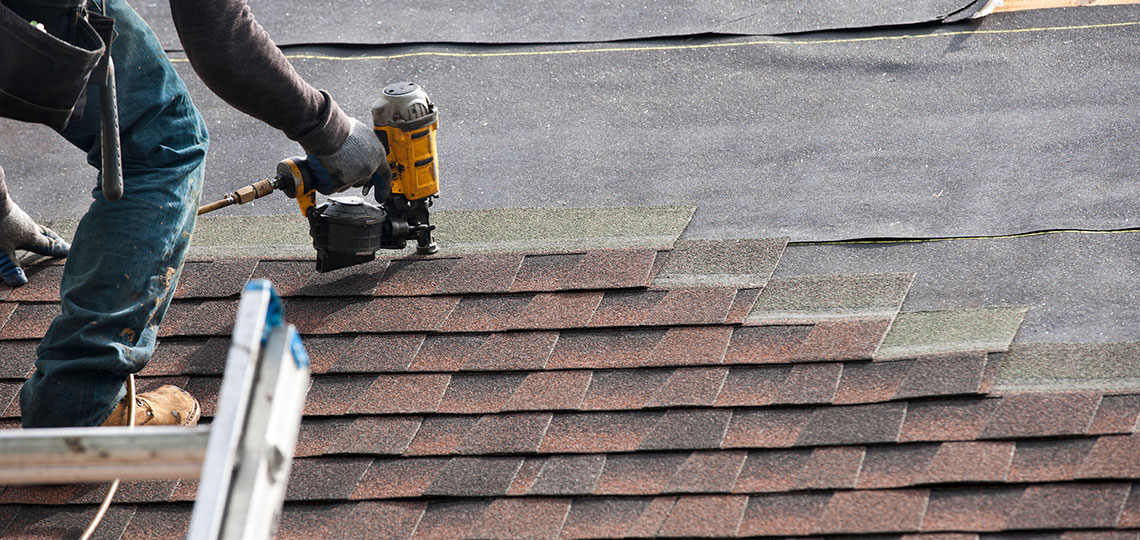Vital Inquiries to Ask Gainesville Roofing Companies Before Employing
Vital Inquiries to Ask Gainesville Roofing Companies Before Employing
Blog Article
Best Practices for Ensuring Appropriate Roof Air Flow
A balanced intake and exhaust air vent proportion, typically 1:300, plays an essential duty, with consumption vents ideally put at the lower side of the roof for amazing air entry and exhaust vents at the optimal for warm air departure. Maintaining insulation away from vents is crucial to prevent air movement restriction.
Understand Air Flow Essentials
Appropriately recognizing ventilation essentials is vital for making sure the longevity and efficiency of roof. Reliable air flow alleviates wetness accumulation and temperature extremes in the attic room, both of which can result in substantial architectural damages with time. A well-ventilated roof helps in protecting against typical concerns such as mold and mildew growth, timber rot, and ice dams, which can compromise the stability of the roofing products and the underlying structures.
The main goal of air flow is to assist in the movement of air, enabling a consistent exchange between the interior and outside settings. This equilibrium is achieved through a mix of consumption and exhaust vents that collaborate to maintain optimal air flow. Consumption vents, normally situated along the soffits or eaves, allow fresh air to get in the attic room, while exhaust vents, typically situated at or near the roofing ridge, allow hot, humid air to leave.
Key aspects affecting the performance of roofing ventilation consist of correct placement, adequate sizing, and making sure that both consumption and exhaust vents are unobstructed. Routine assessment and upkeep are essential to identify possible clogs, damage, or ineffectiveness in the air flow system, consequently safeguarding the roofing system's efficiency and resilience.
Sorts Of Roof Vents
Roofing vents play a critical role in preserving reliable attic room ventilation and, by extension, the overall wellness of the roof system. Numerous types of roof vents are readily available, each with special advantages customized to specific roof requirements. Ridge vents, as an example, are set up along the roofing system's height, allowing cozy, moist air to get away from the attic room. They use continuous ventilation and blend effortlessly with the roofline, making them both effective and cosmetically pleasing.

Soffit vents are mounted under the eaves and operate in tandem with roofing system vents to ensure a well balanced intake and exhaust system. By permitting cooler air to get in from below, soffit vents help with the expulsion of warm air with top vents. Gable vents, situated on the exterior wall surfaces of the attic, deal an additional reliable solution, particularly in homes with saddleback roofs.
Examine Your Current Air Flow

Next, consider the age and condition of your roof covering materials and air flow components. Older systems may not follow present building regulations or might have weakened with time, decreasing their performance. Conduct a comprehensive evaluation to recognize any type of indicators of wear and tear, such as corrosion, damages, or spaces that can jeopardize the system's performance.
Additionally, measure the attic room temperature level and humidity levels. High temperatures and moisture can indicate poor ventilation - roofing companies in gainesville florida. Make use of a hygrometer and thermometer to get exact readings, contrasting them with outdoor problems. Persistent disparities suggest potential concerns that need attending to.
Setup Best Practices
Efficient setup of roof covering air flow systems is extremely important for making sure optimum efficiency and long life. Appropriate setup begins with recognizing the particular ventilation requirements of the building and the roofing system it covers. This includes determining the appropriate proportion of intake to exhaust vents, generally adhering to the 1:300 guideline, which states one square foot of air flow for each 300 square feet of attic floor area.

The placement of vents is equally crucial. Intake vents must be mounted at why not find out more the roofing system's lower edge, usually in the soffits, to allow amazing air to enter. Exhaust vents, on the various other hand, must be mounted near or at the roofing's top to assist in the exit of warm, wet air. This produces a natural air flow that assists maintain temperature and wetness equilibrium within the attic room room.
Seal all vent connections meticulously to avoid air leaks and prospective water seepage. Usage top notch products and adhere to maker guidelines to make sure toughness and effectiveness. In addition, integrating ridge vents with baffles can dramatically boost airflow effectiveness by avoiding wind-driven rain and snow from going into the attic room.
Ultimately, specific installation of roof covering ventilation systems minimizes prospective issues such as mold and mildew growth, ice dams, and structural damages, guaranteeing the roof's honesty and the structure's overall health and wellness.
Normal Upkeep Tips
Consistency in upkeep techniques is basic to making sure the lasting performance of roofing ventilation systems. Routine inspections are crucial, preferably done biannually-- in the spring and fall. During these examinations, guarantee that vents are without debris, nests, and other obstructions that could hamper air movement. Look for any indicators of moisture build-up or mold, as these can indicate improper air flow or leakages (gainesville roofing companies).
Cleansing the vents is another necessary job. Use a soft brush or a vacuum to get rid of dust and particles from intake and exhaust vents. Beware not find out here to harm the air vent displays or louvers throughout the procedure. Furthermore, inspect the attic area for any type of indicators of water damage, which might endanger the stability of the roof.
Correct insulation is just as important. Guarantee that attic insulation does not obstruct the vents, as this can significantly restrict air movement. If any type of insulation has actually shifted or resolved, reposition or replace it to maintain an efficient obstacle.
Lastly, change any kind of damaged or missing out on components quickly. Damaged vents, fractured shingles, or deteriorated flashing can all add to inadequate ventilation and needs to be addressed immediately. Routine upkeep makes certain that the roofing air flow system works efficiently, consequently expanding the lifespan of the roof covering itself.
Conclusion
Ensuring proper roof air flow is paramount for maintaining the performance and resilience sites of a roofing system. Adherence to the 1:300 consumption and exhaust vent ratio, paired with the calculated placement of vents, is necessary.
A well balanced intake and exhaust air vent proportion, typically 1:300, plays a pivotal function, with consumption vents preferably positioned at the reduced edge of the roofing system for cool air entry and exhaust vents at the peak for cozy air exit. Intake vents, commonly located along the soffits or eaves, enable fresh air to go into the attic room space, while exhaust vents, commonly located at or near the roofing system ridge, make it possible for warm, moist air to leave.
Soffit vents are set up under the eaves and job in tandem with roof covering vents to ensure a well balanced intake and exhaust system. By enabling cooler air to go into from below, soffit vents promote the expulsion of hot air via upper vents. Adherence to the 1:300 intake and exhaust air vent ratio, coupled with the calculated positioning of vents, is necessary.
Report this page